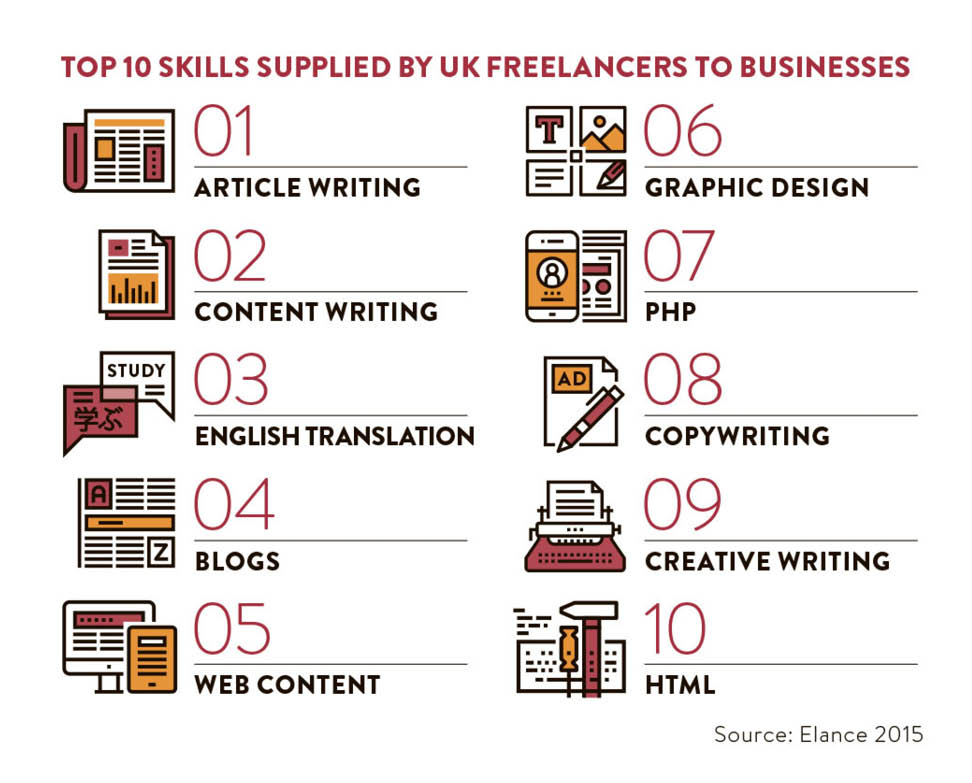The freelance economy is one of the great UK success stories of recent years.
It has grown by 25 per cent since 2009 to turnover an estimated £109 billion a year, more than the entire automotive sector, according to figures published today by IPSE, the membership body supporting contractors, independent professionals and freelancers.
Not only does the freelance economy provide an estimated £30 billion a year in “added value” to UK gross domestic product, IPSE says, it has contributed to much of the growth in employment in recent years, with the latest labour force figures from the Office for National Statistics showing a record 4.63 million, one in seven of the workforce, are self-employed.
However, this number includes everyone from plumbers to plasterers and caterers to childminders with the government-commissioned Self-Employment Review published in February highlighting that construction, taxi and cab drivers, and carpentry and joinery are the most common job roles.
An increasingly flexible workplace
Freelancers, who tend to be knowledge-based workers, account for a much smaller percentage of this workforce – around 1.91 million, according to IPSE. This segment of self-employment is among the fastest growing with numbers up by 36 per cent since 2008.
While many of those becoming self-employed after the credit crunch did so out of necessity, in the last five years it is has increasingly been through choice.
It is a win-win that you just do not see to the same extent in other European countries, which is great for our economy
“It is called a labour market for a reason. On one side you have increasing demand from businesses wanting to keep costs down and hire in skills as and when they need them, and on the other you have a growing number of individuals who want to work flexibly,” says Kevin Green, chief executive of the Recruitment and Employment Confederation.
“It is a win-win that you just do not see to the same extent in other European countries, which is great for our economy. So over the next five to ten years, the numbers will only increase.”

PeoplePerHour, the online freelance platform, recently forecast that half of us could be working for ourselves by 2020. Professional services firm PwC is more conservative with its research showing that half of human resources professionals expect at least one in five of their workforce to be made up of contractors or temporary workers by 2020.
Samantha Hurley, operations director of the Association of Professional Staffing Companies, says: “The professional flexible workforce continues to see placements increase and this will not change as UK businesses need to compete, buying in talent when they need it.”
“It is now the norm,” says Chris Bryce, chief executive of IPSE. “There has been a structural shift in the way the UK economy works. However, what has really changed is that the use of freelancers, which multinationals have used for two or three decades, is now more prevalent among smaller and medium-sized companies.” win
A win-win situation
The gig economy is also fuelling growth, although PwC’s research highlights that this makes up only 2 per cent of total recruitment. Instead it is higher skilled managerial, professional and associate professional jobs that are the real drivers of growth, with nearly 60 per cent of the rise in self-employment in the last five years coming from these highly paid and experienced freelancers, according to the Self-Employment Review.
There has also been a shift in the demographic profile with more women becoming self-employed and a 51 per cent increase in the number of freelancers aged 16 to 29 since 2008, and an even larger 63 per cent rise in freelancers over 60, according to IPSE.
However, professionals in all age groups are attracted to this way of working. Half of the 9,000 knowledge-based workers across the UK, United States and Germany surveyed for The Way We Work study, commissioned by software firm Unify, said they would consider changing to a freelance or on-demand model of work over regular employment if it were offered. Already one in five currently worked as freelancers or contractors.
Startups and the booming tech sector are particularly reliant on this flexible workforce. Geoff Smith, managing director Europe of IT resourcing specialist Experis, which produces the Tech Cities Job Watch, says that the UK is one of the top five leaders in the use of IT contractors, outpacing the US, with a 10 per cent rise over the last year.
Upwork, which has 355,000 freelancers on its online talent marketplace in the UK, is also experiencing phenomenal growth. Last year the number of UK freelancers starting to work on its platform grew by 126 per cent.
However, the life of the freelancer or contractor is not an easy option, with IPSE’s Mr Bryce warning: “There is no job security, working on your own can be difficult and you have to provide your own services from marketing to accounting and pensions.”
Even so, the vast majority are satisfied with their career choice. SJD Accountancy, which provides accounting services to contractors, recently surveyed 1,000 of them and discovered that, since becoming a contractor, three quarters felt there had been a positive effect on their work-life balance, while eight in ten said they found being a contractor more satisfying. More than nine in ten were also earning more than when they were an employee.
One factor, which is not often considered when examining the growth of the freelance economy, is that the alternative is much less attractive than it once was. Simon Curry, chief executive of SJD Accountancy, says: “The steady erosion of employment rights and the decline in the additional extras related to permanent employment, such as defined benefit pension schemes, has made contracting seem less risky than being an employee.”
NEW BUSINESS MODEL
 Freelancers are increasingly part of the business model of new startups, which need a highly skilled, on-tap workforce without committing to costly overheads.
Freelancers are increasingly part of the business model of new startups, which need a highly skilled, on-tap workforce without committing to costly overheads.
Philip Lillefelth, founder and chief executive of Pansofica, a design concept studio that develops products including the AxionMotion app, which is similar to Uber, but for manufacturers, enabling them to tap into fleet transport, says: “It is imperative that we keep evolving. However, upskilling staff can be expensive and time consuming, so we decided to have a core staff of three founding partners, and to then access a network of up to 30 engineers and designers who take it upon themselves to stay up to date with technical skills.”
The CV Centre, which started as a one-man band in 1998 and has grown into a multinational business operating in 12 countries, also uses this business model.
“We have only 20 salaried staff, but use 150 freelancers around the world,” says founder James Innes. “It is a very flexible way of managing expansion, keeping commitments and costs under control, and I can hire in freelancers with experience in specific areas, such as writing a CV for someone in the legal sector, when I need to. This flexibility works both ways. Many of our freelancers are looking for the work-life balance salaried staff can only dream of.”
An increasingly flexible workplace

